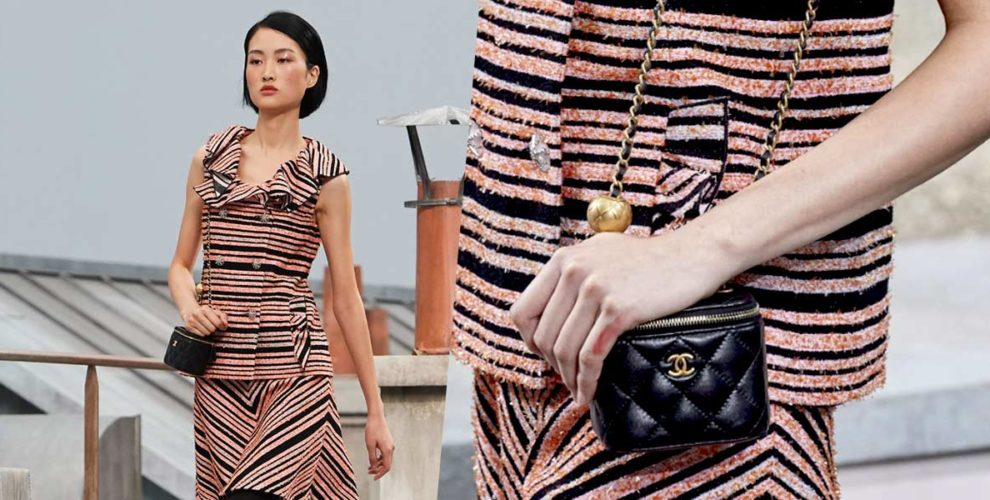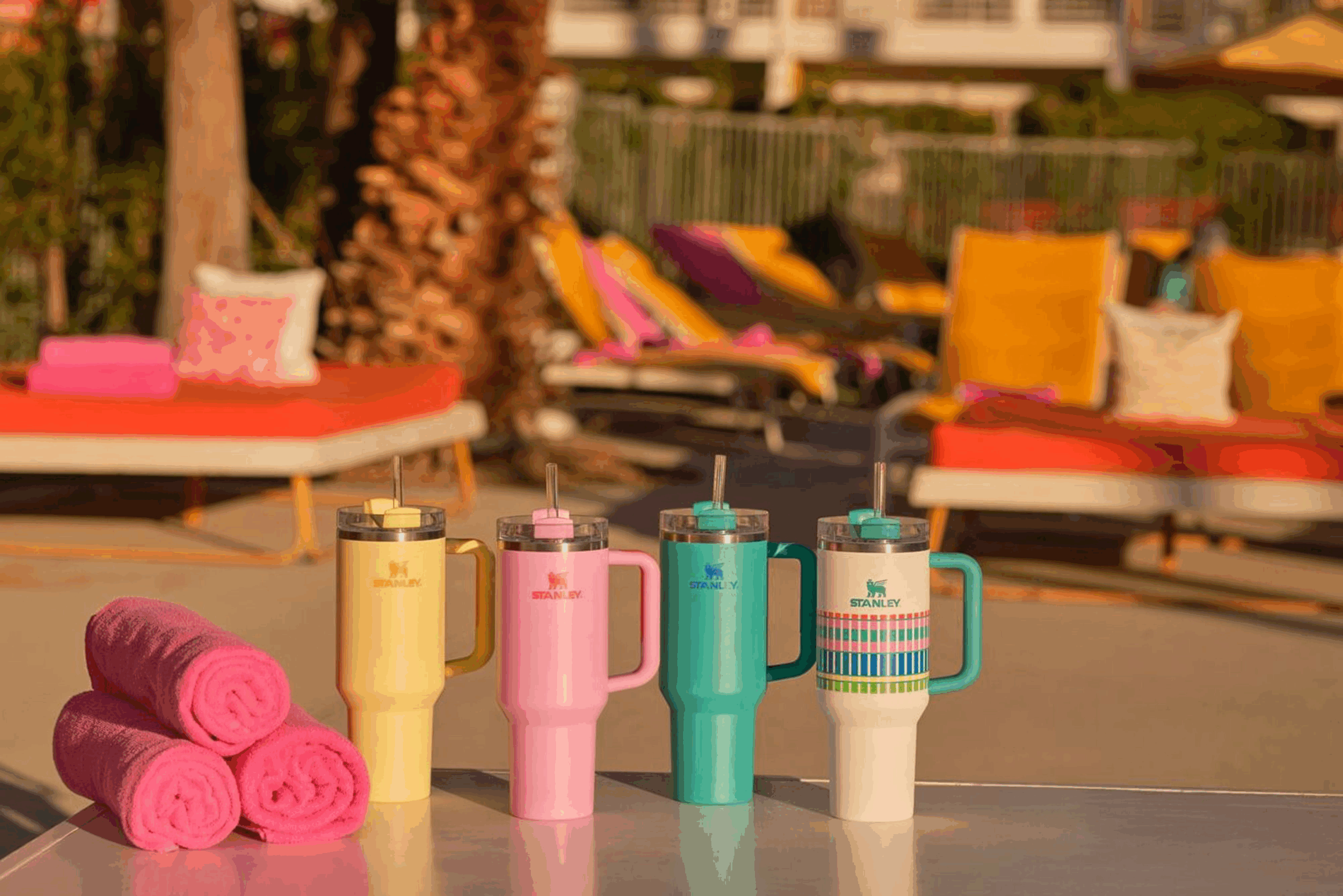Luxury never lingers. It just pops.
“Pop-Up.” Quick, catchy, a little bit chaotic. But behind the whimsy lies a well-oiled machine: branded temples disguised as temporary fun, where fashion, art, and marketing blur into one glossy hallucination.Designed to Offend: How Luxury Uses Price Tags to Go Viral
by Thea Elle | July 27, 2025 | Luxury Bags
It’s not really about carrying water or holding your keys. It’s about sending a message. Whether it’s a rare-color Stanley or a luxury bag that costs more than your rent, the goal isn’t function—it’s attention. The steeper the price, the stronger the response. Outrage spreads fast, and every share or snarky comment only adds fuel. These aren’t everyday items. They’re conversation starters in designer packaging.

The High Price of Going Viral
Luxury used to whisper. Now it shouts. The new wave of high-end design isn’t about elegance or subtlety. It is crafted for shock. A handbag that looks like a paper lunch sack or a stainless steel water bottle that costs more than a flight to Paris is not a mistake. It is intentional. These products are not made to be used. They are made to be noticed.
In a culture where attention means power, outrage is its own marketing plan. If a design sparks ridicule, memes, or a flurry of think pieces, it has already succeeded. Being talked about matters more than being admired. That is the real product.

Ridiculous by Design
Luxury fashion has always flirted with the surreal, but now it fully embraces the absurd. A purse that resembles a potato chip bag or a clutch that couldn’t possibly hold more than a single coin isn’t a design error—it’s the point. These objects are status symbols disguised as in-jokes, pieces that gain power precisely because they abandon traditional ideas of usefulness. If it turns heads, sparks confusion, or gets reposted on social media, it’s doing its job.
What makes these items so coveted isn’t the material or the craftsmanship, but the message they send. Owning something outrageously priced and bafflingly designed signals that you operate on a different plane of consumption. You’re not buying the bag to carry things. You’re buying into a narrative of audacity, exclusivity, and visibility. When logic takes a backseat, spectacle takes the wheel—and luxury brands are all too happy to drive.

From Ridicule to Reverence
A $3,000 handbag shaped like a school lunchbox or a designer water bottle sling might seem like a fashion spoof at first glance. These objects toe the line between art piece and parody, the kind of thing you’d expect to see on a runway as commentary rather than a product meant for actual purchase. But in the age of aesthetic feeds and influencer endorsements, irony doesn’t stand a chance. Once filtered, styled, and posted, the absurd becomes aspirational.
As these items circulate through reels, TikToks, and flat lays, their oddity begins to soften. The repetition works like hypnosis—what once read as satire now signals taste. A microbag that can’t fit anything becomes a flex, not a flaw. A cup with a resale waitlist becomes a statement piece, not a hydration tool. Slowly but surely, the internet reframes the ridiculous as required. And before we know it, we’re not laughing at the joke. We’re wearing it.

Built for the Feed, Not the Function
In luxury fashion today, the goal isn’t to blend in—it’s to stand out, no matter how impractical that looks. A slouchy tote that mimics a paper bag or a purse too small to hold more than a coin isn’t a design failure. It’s a statement, engineered for impact. These items aren’t solving problems; they’re starting conversations. The more visually confusing they are in real life, the more they shine on camera. In a landscape ruled by likes and reposts, a bold silhouette is worth more than a functional one.
Look no further than the Stanley cup. Originally built for durability, it’s been reborn as a lifestyle essential—obsessively collected, accessorized, and styled into personal branding. Prada saw the moment and elevated it with a nylon bottle holder that costs more than your rent. Nobody’s asking if it’s useful. They’re asking where to get one. In this world, value comes from visibility. And if the product is photogenic enough to trend, the price tag can say whatever it wants.

Viral Over Value
Once upon a time, luxury meant expert tailoring, fine leather, and subtle prestige. Today, it means something that pops in a grid of thumbnails. A purse too small for keys or a cup with couture packaging doesn’t need to make sense—it just needs to go viral. The more impractical or outrageous the item, the more likely it is to be shared, memed, and eventually, desired.
We’ve crossed a threshold where absurdity no longer disqualifies a product—it validates it. If it gets attention, it gains value. These objects weren’t designed for real life. They were designed for engagement. A $600 cup isn’t about drinking water. It’s about being seen holding it. The feed isn’t just where trends live—it’s where meaning is made.
The Luxury of Being Seen
What we’re purchasing isn’t a bag, a bottle, or even a brand. It’s visibility. Relevance. A momentary edge in the algorithm. A monogrammed microbag or a Prada-wrapped Stanley cup doesn’t solve problems; it creates spectacle. These items don’t serve our lives—they serve our online personas. The real function of a $600 water bottle isn’t hydration. It’s validation.
Luxury has always been about illusion, but now that illusion is shaped by the scroll. The smoke comes from ring lights, the mirrors from front-facing cameras. Everything is a performance: the unboxing, the product placement, the caption. Even irony is part of the act. You don’t have to take it seriously—you just have to post it. Because once it’s shared, it’s done its job.
And in this economy of attention, even critique is currency. The louder the backlash, the wider the reach. When we roll our eyes at the absurdity, we amplify it. Outrage becomes advertising. Disbelief becomes demand. So whether we love it or mock it, luxury wins either way. The product isn’t the accessory—it’s the spectacle we all willingly buy into.